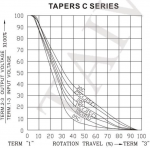I'm really enjoying my Dunder Chief/Dirty Deed overdrive. It's surprisingly good at a classic marshall kind of OD - perhaps a little too dirty at the uppermost ranges of gain but overall it has a cool midrange and reasonable thump. It has that most important aspect of any pedal - it makes you want to keep playing.
But as with a real Marshall it can get a little furry on the low strings and i like a bit more twang. If I compare it with a Rockett Majestic it has a slightly chirpier midrange which is great but it hasn't got the definition in the low strings i like. So I'm wondering - if I use a lower gain pair of transistors rather than the MPSA18s would that make things a little less fuzzy? I only use the gain at around 10.00 so there's plenty of dirt to spare.
Turning the bass knob down doesn't really achieve any more twang. Thoughts?
But as with a real Marshall it can get a little furry on the low strings and i like a bit more twang. If I compare it with a Rockett Majestic it has a slightly chirpier midrange which is great but it hasn't got the definition in the low strings i like. So I'm wondering - if I use a lower gain pair of transistors rather than the MPSA18s would that make things a little less fuzzy? I only use the gain at around 10.00 so there's plenty of dirt to spare.
Turning the bass knob down doesn't really achieve any more twang. Thoughts?


